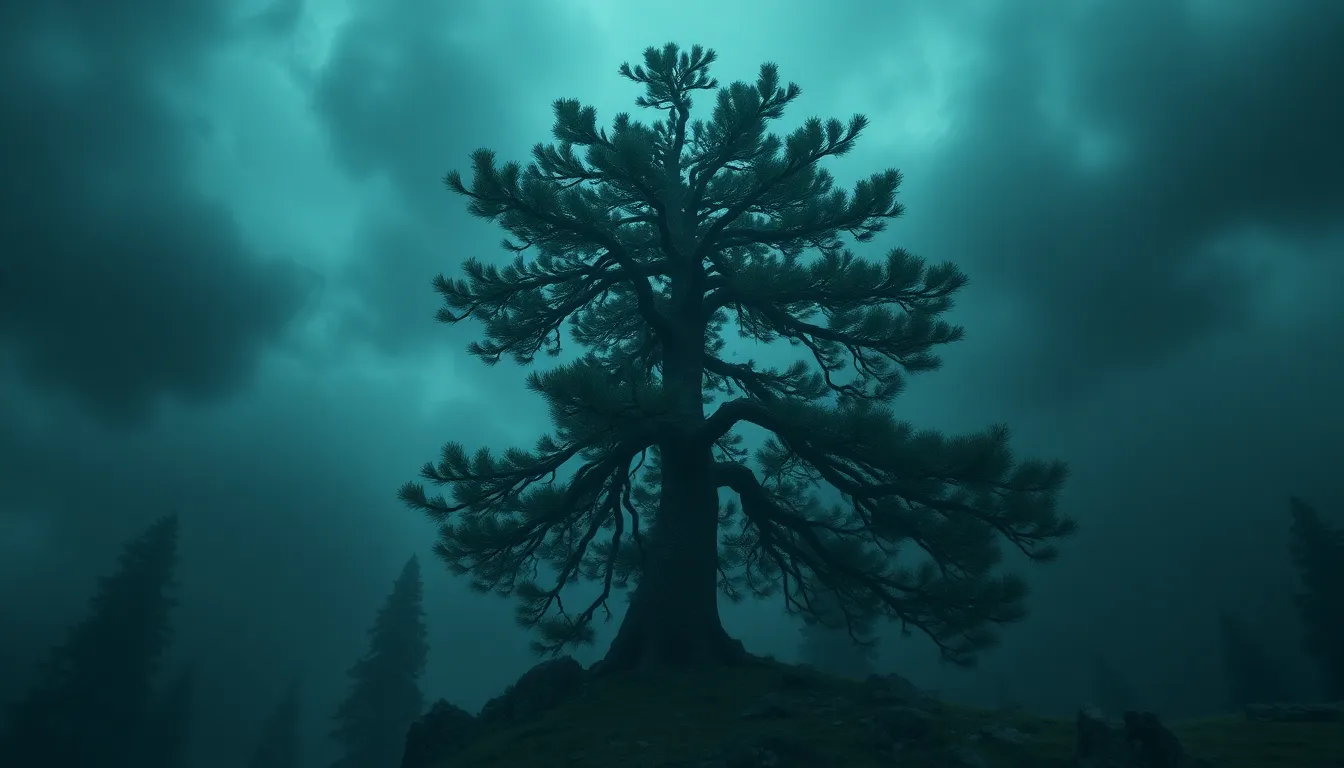The Tree of Shadows: Myths of Mystery and Secrets
I. Introduction
The Tree of Shadows is a captivating concept that intertwines nature with the enigmatic realms of myth and folklore. This symbolic tree stands not only as a physical entity but also as a metaphor for the complexities of human experience—representing the interplay of light and darkness, known and unknown.
Myths play a crucial role in shaping culture and storytelling, acting as vessels for conveying wisdom, morals, and collective fears. They weave narratives that transcend time and geography, connecting generations through shared tales. The Tree of Shadows, with its rich symbolism and diverse interpretations, serves as a focal point for exploring the mysteries and secrets that lie within us and around us.
This article delves into the historical origins, symbolism, cultural variations, and modern interpretations of the Tree of Shadows, revealing its enduring impact on our understanding of life and the human psyche.
II. Historical Origins of the Tree of Shadows
The origins of the Tree of Shadows can be traced back to ancient civilizations, where trees were often revered as sacred beings. Various cultures interpreted trees as symbols of life, wisdom, and connection to the divine.
- Ancient Civilizations: In Mesopotamia, for example, the sacred tree was a symbol of the cosmos and was often depicted in art and literature.
- Greco-Roman Cultures: The Greeks and Romans viewed trees as homes to deities and spirits, serving as a bridge between the earthly realm and the divine.
The role of trees in mythology is significant across cultures. They often embody the connection between the physical and spiritual worlds, highlighting the duality of existence. Over time, the Tree of Shadows myth has evolved, absorbing influences from various cultural narratives and adapting to contemporary contexts.
III. Symbolism of the Tree in Mythology
The Tree of Shadows carries deep symbolism, representing the complexities of life, death, and the unknown. Its branches reach toward the heavens, while its roots delve deep into the earth, illustrating the interconnectedness of all things.
- The Tree as a Symbol of Life and Death: Trees often signify growth, renewal, and the cycle of life. However, they also embody mortality, as they eventually decay and return to the earth.
- Shadows as Representations of Hidden Truths: The shadows cast by the tree symbolize the secrets and mysteries that lie beneath the surface, inviting exploration and introspection.
- The Duality of Light and Darkness: In many myths, trees are depicted as places where light and darkness converge, illustrating the balance of opposing forces within the human experience.
IV. Regional Variations of the Tree of Shadows Myth
The Tree of Shadows manifests differently across various cultures, each interpretation reflecting unique beliefs and values.
- European Interpretations: In European folklore, trees are often associated with spirits and the supernatural. The ancient Druids revered oak trees as sacred and believed they held mystical powers.
- Native American Legends: Many Native American tribes view trees as sacred, seeing them as the embodiment of life and the spirit of nature. The Tree of Life, for instance, is a common theme that symbolizes interconnectedness.
- Asian Myths: In Asian cultures, trees often symbolize wisdom and enlightenment. The Bodhi tree, under which the Buddha attained enlightenment, exemplifies the spiritual significance of trees in these traditions.
V. The Tree of Shadows in Literature and Art
The Tree of Shadows has inspired numerous works of literature and art, captivating audiences with its rich symbolism and profound meanings.
- Notable Works: Many authors, such as J.R.R. Tolkien and Gabriel García Márquez, have incorporated tree symbolism in their narratives, using the Tree of Shadows to explore themes of mystery and the human condition.
- Visual Representations: Artists often depict trees as central figures in their work, using light and shadow to convey emotional depth. The contrast between light and darkness can evoke feelings of wonder and introspection.
- Cultural Perceptions: These portrayals have significantly influenced how cultures perceive trees and their symbolic meanings, reinforcing the connection between nature and human experience.
VI. Psychological Interpretations of the Tree of Shadows
From a psychological perspective, the Tree of Shadows can be seen as a metaphor for the subconscious mind. It represents the hidden layers of our psyche that influence our thoughts and behaviors.
- The Tree as a Metaphor: The trunk represents our conscious self, while the branches and leaves symbolize our thoughts, emotions, and experiences that extend into the subconscious.
- Shadows Representing Fears: Shadows often embody repressed fears and desires, urging individuals to confront and integrate these hidden aspects of themselves.
- Jungian Analysis: Carl Jung’s theories emphasize the importance of archetypes, with the tree symbolizing growth, transformation, and the journey toward wholeness.
VII. The Role of the Tree of Shadows in Modern Media
In contemporary media, the Tree of Shadows continues to resonate, appearing in various forms and genres.
- Film and Television: Many films and series utilize the Tree of Shadows as a motif to represent conflict, personal growth, and the exploration of hidden truths.
- Contemporary Literature: Modern authors often revisit the Tree of Shadows, using it to connect with themes of identity, memory, and the complexity of human emotions.
- Social Media Influence: The rise of social media has allowed for a resurgence of interest in myths, with users sharing stories and interpretations of the Tree of Shadows, sparking discussions about its relevance today.
VIII. Personal Reflections and Anecdotes
Many individuals have their own stories and reflections related to the Tree of Shadows, revealing its personal significance.
- Encounters with the Tree: People often recount experiences of awe and contemplation while standing beneath a tree, feeling a connection to nature and the mysteries it holds.
- Psychological Impact: Personal experiences with trees can evoke strong emotions, leading to reflections on life, loss, and the passage of time.
- Lessons Learned: The Tree of Shadows can teach us about the importance of embracing both light and darkness within ourselves, fostering personal growth and understanding.
IX. Environmental Perspectives and Conservation
The Tree of Shadows also holds ecological significance, reminding us of the importance of trees in our ecosystems.
- Importance of Trees: Trees play a vital role in maintaining ecological balance, supporting biodiversity, and providing essential resources for all living beings.
- Myths and Ecological Awareness: Myths like the Tree of Shadows can promote awareness of environmental issues, encouraging individuals and communities to protect and conserve natural habitats.
- Relevance in Discourse: In today’s environmental discourse, the Tree of Shadows serves as a symbol of hope and resilience, inspiring movements for conservation and sustainability.
X. Conclusion
In conclusion, the Tree of Shadows is a powerful symbol that encapsulates the mysteries and secrets of life. Its significance transcends cultures and time, providing insights into human experience, psychology, and our relationship with nature. From ancient myths to modern interpretations, the Tree of Shadows continues to inspire and provoke thought, reminding us of the enduring nature of myths in understanding ourselves and the world around us.



